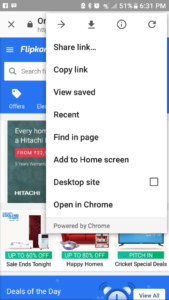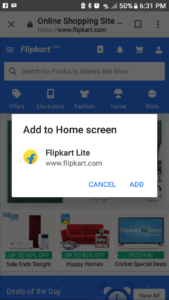How to Increase Mobile Traffic and Conversions Now
Posted by Laurie Aines | Digital Marketing, Digital Trends | No CommentsIntroducing Progressive Web Applications (PWAs)
With the lightning fast growth of mobile devices, it is important to speed up your site to increase mobile traffic and conversions. Read on to learn about PWAs.
When will mobile apps be obsolete?
How many apps can you have on your phone? Have you ever had 50+ updates to run as companies enhance or fix their apps on a frequent basis? Do you know how much memory these apps use? You as a marketer, expect your users to constantly update your app, while using precious bandwidth to keep it on their phone. If you do not offer an app, your responsive website is most likely slower and more cumbersome than mobile users will tolerate. However, many users have to many apps and stop using them. By adding PWA to your site, you can increase the speed without an app, and will increase traffic and conversions.
PWAs take up minimal space, require virtually no user updates, and can significantly increase site and mobile download speed.
What are PWAs?
Progressive Web Applications (PWA) are a solution that incorporates the great mobile user experience (UX) found in Apps directly into the mobile experience of accessing your company website. PWAs allow users to launch your content from the landing page, similar to a native app. However, PWAs use less bandwidth on the device than native apps.
PWAs have been around since 2015 but there were several technical barriers preventing companies from using them. Most of those issues have been resolved. Currently Chrome, Opera, Firefox and Safari browsers are supporting PWAs. Microsoft Edge and Samsung Internet browser are working on it. They now allow for push notifications and location services.
How have PWAs helped other companies?
Several companies including Starbucks, Lancôme, Lyft, Uber, Pinterest Fandango, Virgin American, AliBaba and Forbes have introduced PWA technology on their websites. All have seen positive results. For example, Lancôme saw they could increase traffic and conversions. Mobile sessions increased by 53% and conversion rates by 17%. At FlipKart, 60% of customers returned to use the PWA after uninstalling the native app. Both Fandango and Virgin America had significant speed increases of 30% faster load times on desktop and 50% over mobile. And Alibaba increased traffic and speed, resulting in a 76% increase in conversions.
What does a user do with the PWA?
Using a PWA is as easy as 1-2-3. When they land on the site, they simply
- Click on menu on the mobile device (often 3 horizontally stacked lines, called a “hamburger menu”)
- Click on the “Add to Home Screen” option

PWA Step 1: Click “Add to Home Screen”
- Click on “Add”

PWA Step 2: Click “Add”
Voila. That is all. The PWA appears on the phone, looking similar to an App.
Communication Recommendation
Since most users are not aware of the PWA concept, they may not understand how to find the “Add to Home Screen” or why to do so. It would be important to communicate the benefits to users at this early stage in the PWA life cycle. While I have not seen this on current sites, I recommend a clickable message on the landing page to inform users that this will be the fastest and easiest user experience that uses very little memory on their mobile device.
When is the time to start working on a PWA for your site?
Now. Google is looking for PWAs to replace Chrome Apps. More importantly, as mobile usage continues to gain momentum and user expectations for speed and seamless mobile experience, it is important to make it as fast and easy as possible for your audience to navigate and convert on your website.
To learn about other ways to increase mobile speed, read about AMP.

 "Marketing by interrupting people isn't cost-effective anymore. You can't afford to seek out people and send them unwanted marketing messages, in large groups, and hope that some will send you money.
"Marketing by interrupting people isn't cost-effective anymore. You can't afford to seek out people and send them unwanted marketing messages, in large groups, and hope that some will send you money.
RECENT COMMENTS